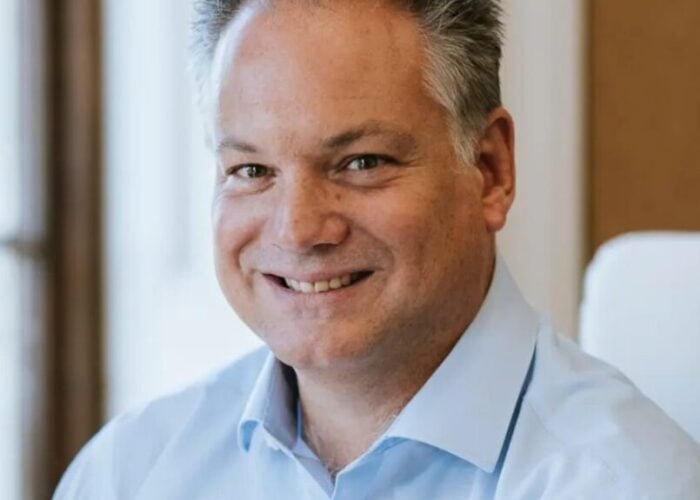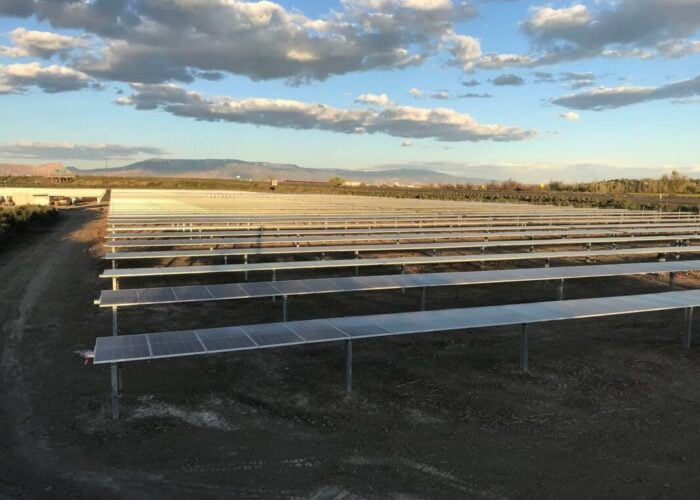
The rapidly changing nature of the world’s energy mix has necessitated similarly rapid changes in the solar power purchase agreement (PPA) space, to the extent that new mechanisms will be required to minimise risk and maximise investment in the long-term.
This was a key conclusion drawn from an opening discussion on the first day of this year’s Intersolar Europe conference, held today in Munich, Germany. A group of industry experts discussed the challenges and opportunities arising in the solar PPA sector, with all four speakers suggesting that more diversified portfolios will become a key component of the global renewable energy sector.
Try Premium for just $1
- Full premium access for the first month at only $1
- Converts to an annual rate after 30 days unless cancelled
- Cancel anytime during the trial period
Premium Benefits
- Expert industry analysis and interviews
- Digital access to PV Tech Power journal
- Exclusive event discounts
Or get the full Premium subscription right away
Or continue reading this article for free
“It’s hybrid deals,” explained Itamar Orlandi, director for commercial strategy at Swiss consultancy Pexapark, who noted that offtakers signed deals for projects with a combination of technologies – such as solar and wind – with a total capacity of 2.7GW in 2024.
“Corporate offtakers now say: ‘We still want green power, we can still buy your solar, but you have to mix it with wind, or we’re onboarding too much risk’,” he continued, suggesting that concerns about the risk of investing in a single renewable power technology is dissuading investment. “We’re seeing the independent power producers (IPPs) shift in parallel, desperately chasing anything that’s wind or hydropower to dilute the solar pipelines they want to bring to market.”
Orlandi also suggested that the perceived risk of single-technology investments has already had an impact on the industry, attributing the significant decline in the percentage of offtakers that are utilities to this perception. Pexpark figures show that, between 2023 and 2024, there was a 59% drop in utilities signing PPAs, while corporate offtakers were responsible for 83% of PPAs signed in 2024, up from just 34% in 2019.
“Part of the reason the utilities have been less prevalent in the market is that they saw this coming two or three years ago, saying: ‘We maxed out on solar risk’,” he said. “Increasingly, I think the corporates are starting to see this picture [and that] even though they can get €20 less on solar it doesn’t mean it’s a good price.”
“Compared to [a vanilla PPA], you’re contracting with a project that has multiple technologies and it shows a different kind of shape [which] helps to smooth the output of the project,” agreed Beatriz Guillén Sánchez-Hidalgo, head of power markets for Southern Europe at Lightsource bp. “Across the day, you get a smoother curve, and over the year, you gain more certainty as to what you’re producing.”
Storage as a means to mitigate risk
The speakers also pointed to the growing presence of storage in the renewable power industry as a means to further reduce risk, an idea that has been raised repeatedly at industry events in the past year. Going into more details, speakers pointed to a number of clear examples of storage helping to mitigate perceived risk, in Europe in particular.
“The interesting bit here is Germany, where you have the price curve first loping downwards, then sloping up again,” said Orlandi, pointing to a graph photographed below. “There’s an expectation that in Germany, from around 2028 onwards, there’ll be enough storage to start smoothing out PPA prices.”

“This is a complex conversation in comparison to the plain vanilla conversation,” said Sánchez-Hidalgo, comparing single-technology PPAs with multi-technology deals or solar-plus-storage agreements, and suggesting that projects of larger nameplate capacity, which require greater financial investment, would benefit from a mixture of technologies to minimise perceived risk. “You get a larger interest from buyers because they’re interested in consuming that shape.”
Sánchez-Hidalgo added that the presence of storage can help minimise the impacts of grid curtailment, making a project a more attractive investment proposition as more of the electricity generated is used in some manner.
“For export capacity, you’re going to have some curtailment. Depending on the design of the project, you’ll have different curtailment, and based on the market, you may find other uses for curtailment.”
‘A very different world’
However, this increasingly complicated investment landscape certainly presents challenges, most notably that, increasingly, there are few precedents for the sorts of deals being struck, at a time when the electricity generation capacity of, and volume of capital needed for, are both growing.
“We’re in a very different world from the world where the merchant PPA market started to emerge about ten years ago,” said Orlandi. “We think we’re entering a world now where the value of renewables is set by the value of renewables and BESS themselves, not just [based on] the gas price, and we’re seeing new mechanisms emerge already.
“We’re seeing an uptick in shorter-term trading, so it’s a much richer environment for these markets,” he said of the changes in the offtake space. “This old world is starting to change – we’re not just base and peak load power and you can fix a long-term PPA simply – and there’s lots of opportunity: who can squeeze the most value out of this world.”
These new ways of working also create new types of risk, such as “renewable development risk”, according to Mauricio Garrido, PPA origination director for the EU, EDP Renewables.
“Development of renewables takes a long time – even more for a wind project – and some development risks are out of developers’ control, and we sometimes cannot do anything to speed it up. If all the risk is put on the developer, it may reduce the appetite for closing a renewable PPA; closing a renewable PPA is different from closing a supply agreement.
“This involves an effort from all parties.”
These more complex challenges will, naturally, require more complex solutions; Jan Knievel, head of origination at Sunnic lighthouse said that: “The more parties get involved … it can become tremendously complex.” However, there was some optimism that despite this uncertainty, solutions would emerge in the future.
“It’s important that people are segregating the risks and taking them separately,” said Knievel. “For example, I’d like to have some companies, as a trader, just doing the shaping for my renewable energy, for pay-as-forecast to baseload, for a premium. I’m reaching out into the market to try to get offers for that, because no-one is, standalone, trying to price this.”






